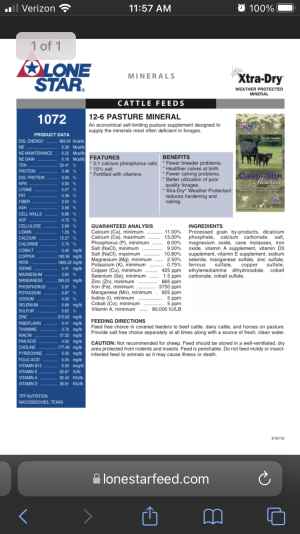faster horses
Well-known member
I find it interesting that what you are using is 1:1 Cal to Phos. Most, if not all, nutritionists recommend 2:1, 3:1, even 6:1 and advise to never use a mineral with more Phos than Cal.Here's what I found on their website.
Anyway, glad it is working for you.
On another note this happened to a rancher we know. He had mineral mixed in town by a local feed dealer. I looked at the tag and said, "there is no zinc in this mineral." He said, "yeah. They were out of zinc when they made it." Jon Patterson, MSU, who did extensive studies on mineral in MT said "if you get the cal-phos ratio out of balance, you are better off not to feed mineral." That fall, the rancher I am talking about had a lot of problems in his cowherd.

